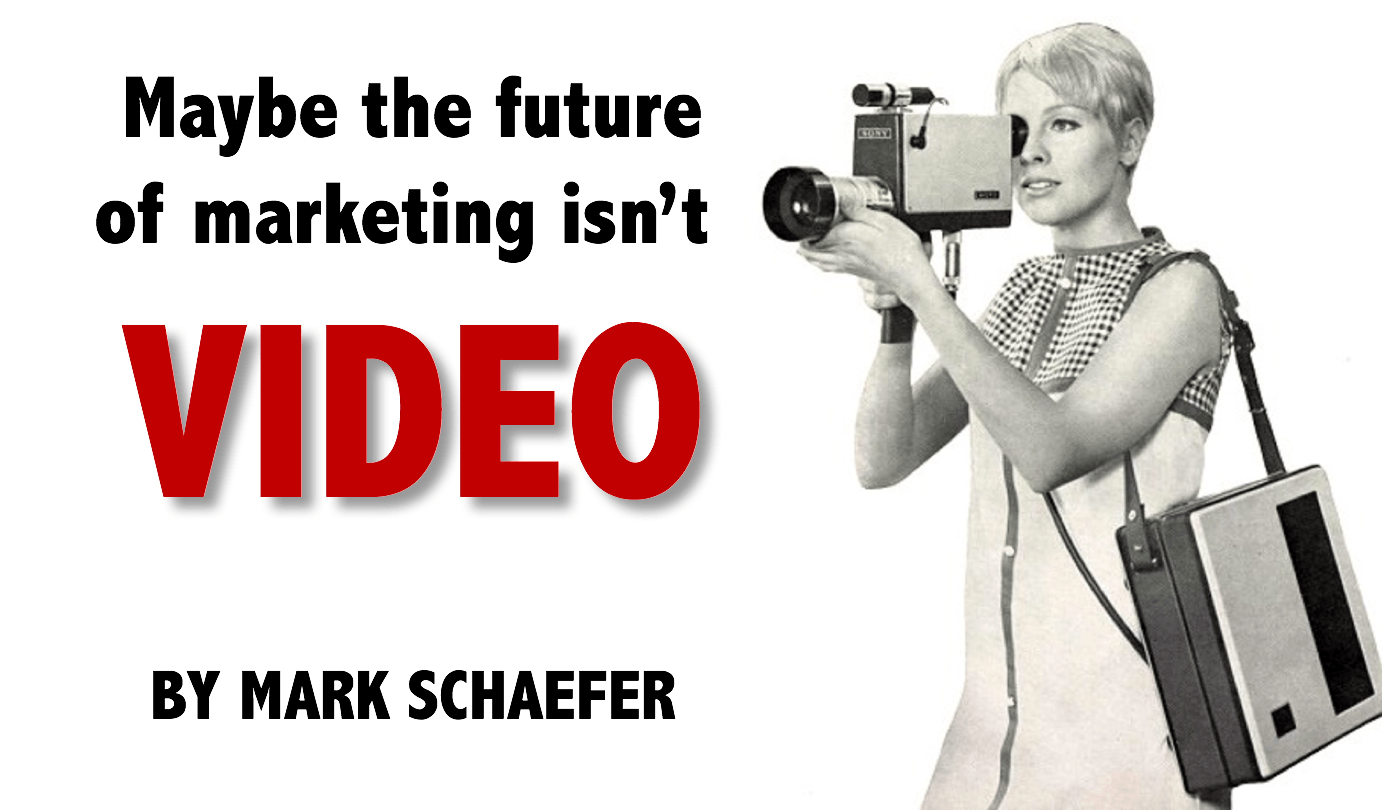By Mark Schaefer
A friend and I were recently discussing the many forecasts of video content taking over the internet.
“I don’t see it,” he said. “Personally I am not a big video content consumer. My son and I will be sitting at the table eating breakfast and looking at the sports page. I’ll be reading a story about the game and my son will be watching videos about the same game. I don’t see myself ever doing that. I’m a reader.”
Of course this is simply one data point, but there is a powerful lesson here: People differ in the way they consume and absorb content. And that’s why video content is NOT going to overwhelm the internet as some people are projecting.
Let’s unpack that idea today.
Hard-wired for content
The internet is filled with projections of video content dominance. This idea that 95 percent of the content on the web will be video by 2020 seems to be making the rounds at conferences.
Who knows? Maybe it will be true. But that doesn’t mean that 95 percent of the content consumed on the internet will be video. There are certain groups of people who simply don’t prefer that method of learning.
Teachers have long known that students learn in four different ways:
- By reading
- By hearing
- By observing
- By doing
Everyone has some pre-disposition toward these content preferences that is hard-wired into our DNA. It is so powerful that at times it even precludes us from learning in any other way.
For example, I had a reader of this blog beg me to transcribe the Marketing Companion podcasts. “I simply can’t listen to podcasts,” she said. “I can’t absorb content that way. I know you have a lot of valuable content on your podcasts but the only way I will get it is if I can read it.
When Pew asked U.S. consumers aged 18 to 29 whether they prefer to watch, listen or read the news, 42 percent responded “read” versus 38 percent who “watch,” and just 19 percent who would rather “listen.” (I have never listened to one audio book. I simply can’t pay attention to audio content even though I know audio books are booming and incredibly popular!).
Hitting the wall
Video, audio, and visual content have been absolutely exploding, while many social media gurus are calling for the death of the blog.
The reason these content forms have been growing so much isn’t because consumer preferences have changed, it’s because these learning dispositions have been under-served for a long time.
Even a few years ago, producing a video for the internet was complicated and expensive and podcasts were nearly non-existent. Now anyone with a smart phone can stream instantly and video-oriented learners are eating this up. Same with podcasts.
For a long time most web content was text-based. So the content balance is shifting to better reflect consumer content preferences.
Virtual reality will probably usher in entirely new content forms that will allow people to learn by doing. But this doesn’t mean the death of videos or podcasts. It just means those who learn-by-doing are getting the content they need to be happy and the content world is re-balancing.
Implications for you
Some gurus are creating a fear factor that you’ll fail or fall behind if you’re not creating video, streaming live, or starting a podcast. I don’t necessarily agree.
If you’re a big business with lots of resources then yes, by all means cover all the bases. But if you’re a small business or entrepreneur with limited resources, how do you decide what kind of content to produce? Should you try to appeal to every audience and every learning type?
I think the answer is very simple. Follow these three questions:
1. What content form brings me joy?
If you’re not having fun, your audience will know it. You’ll ultimately fail if you’re not motivated to create content consistently. So start with the content form that you believe will be sustainable — that’s the most important consideration.
2. Where can I maneuver?
What are your competitors up to? If everybody is blogging, maybe you should try a video or podcast. To succeed, you can’t just repeat what everybody else is doing. Marketing is all about finding a way to maneuver (read about the importance of maneuverability here). So a second consideration is shifting to an uncontested content space.
3. Where is my audience?
An obvious consideration — go where the people want you to be!
But here is a key idea: If you’re resource-constrained, don’t try to do it all. Pick one content form and do it well for at least a year before thinking about diversifying. Stay focused, build an audience, become a master at that one content form.
It’s true that if you choose video, you might miss a “reader” audience, or if you blog you might miss an “audio” audience. With constrained resources, I think it’s a better decision to serve a smaller audience well than serving a larger audience with an effort that is diluted from trying to do too much.
4. What product are you selling?
An article in Psychology Today explains that consumers process content differently and the type of content you produce could very well depend on what product you sell:
The main idea is this — Don’t let guru-fear rule your decisions. Let good business sense guide you and consider your strengths, competitors, audience, and product when considering a content strategy.
What are your thoughts on this idea?

Photo marked safe for re-use by Flickr CC



